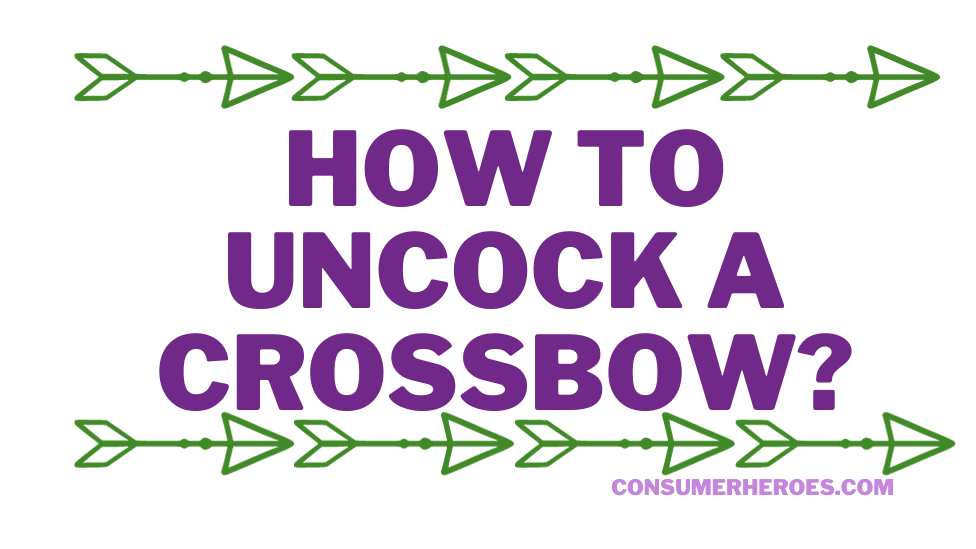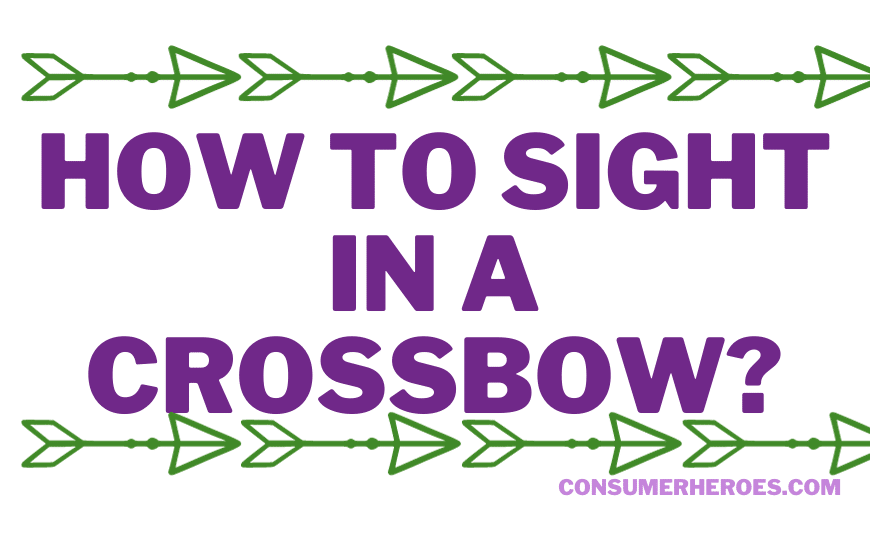Restringing a crossbow can be a daunting task for beginners and even experienced hunters. However, it is an essential skill that every crossbow owner should learn. A properly restrung crossbow ensures accurate shots and prevents potential accidents caused by a snapped string. In this article, we will provide step-by-step instructions on how to restring a crossbow safely and efficiently.
Before restringing your crossbow, it is crucial to understand the basic parts of the weapon. A crossbow consists of a bow, string, trigger mechanism, and stock. The bow is the main component that propels the arrow, while the string serves as the connection between the bow and trigger mechanism. The trigger mechanism releases the string, allowing the arrow to fly towards the target. The stock, on the other hand, is the handle that holds all the other components together.
To restring a crossbow, you will need a few tools such as a bowstring, a bowstringer, and a set of pliers. It is essential to choose the right bowstring that matches the specifications of your crossbow. Using a bowstringer will make the restringing process easier and safer. Pliers will help you adjust the tension of the string and ensure a tight fit. With the right tools and knowledge, you can restring your crossbow with confidence and enjoy accurate shots every time.
Understanding Crossbow Anatomy
Before restringing a crossbow, it’s important to understand its anatomy. A crossbow consists of several components, each with its own function. Here are the primary components of a crossbow:
Stock
The stock is the main body of the crossbow and is typically made of wood, aluminum, or carbon fiber. It’s designed to be held and aimed by the shooter.
Limbs
The limbs are the two arms of the crossbow that extend from the stock. They are made of fiberglass, carbon fiber, or other lightweight materials and are responsible for propelling the arrow forward.
String
The string is the most important component of a crossbow. It’s what connects the limbs and provides the tension needed to launch the arrow. The string is typically made of synthetic materials like Dacron or Spectra.
Cams
Cams are the pulley-like devices located at the end of each limb. They help to reduce the amount of force needed to draw the string back and increase the speed of the arrow.
Trigger
The trigger is located at the front of the stock and is responsible for releasing the string when the shooter is ready to fire. It’s important to ensure that the trigger is functioning properly before attempting to shoot the crossbow.
Scope
The scope is an optional component that can be attached to the top of the stock. It helps the shooter to aim more accurately by providing a magnified view of the target.
By understanding the components of a crossbow, a shooter can better understand how it works and how to properly maintain it.
Safety Precautions
When restringing a crossbow, it is important to take certain safety precautions to avoid injury. Here are a few tips to keep in mind:
- Wear protective gear such as gloves and safety glasses to protect your hands and eyes from any flying debris or the bowstring.
- Always make sure the crossbow is unloaded and pointed in a safe direction before beginning any maintenance.
- Do not attempt to restring the crossbow if you are not familiar with the process or do not have the necessary tools. It is best to have a professional do it for you.
- If the crossbow has been used recently, allow it to cool down before handling it to avoid burns.
- Make sure the crossbow is securely mounted or held in place while restringing to prevent it from slipping or falling.
- Follow the manufacturer’s instructions carefully and do not deviate from them.
- Inspect the crossbow for any damage or wear before restringing. If there is any damage, do not attempt to restring it and have it repaired by a professional.
By following these safety precautions, you can ensure a safe and successful restringing of your crossbow.
Materials Needed
Crossbow String
The first and most important item you will need to restring a crossbow is a new crossbow string. It is important to ensure that the string you purchase is the correct length and strength for your specific crossbow model. You can find this information in your crossbow’s user manual or by contacting the manufacturer.
Stringing Aid
A stringing aid is a tool that helps you safely and easily install your new crossbow string. It is especially useful for those who are new to crossbow maintenance. There are a variety of stringing aids available, including bow presses and stringing jigs. Choose the one that works best for you and your crossbow.
String Wax
String wax is a crucial component of crossbow string maintenance. It helps to protect the string from wear and tear, as well as reduce friction and noise. Apply a small amount of wax to the string after installation and periodically throughout its use to keep it in top condition.
It is important to have all of these materials on hand before attempting to restring a crossbow. Without them, the process can be difficult, time-consuming, and potentially dangerous. By following the proper steps and using the correct materials, you can ensure that your crossbow remains in top condition and performs at its best.
Preparing the Crossbow
Before restringing a crossbow, it is essential to prepare the crossbow. Here are a few steps to follow:
- Remove the old string: The first step is to remove the old string. Make sure to use a stringer tool to do this. A stringer tool will prevent the limbs from bending or breaking while removing the string.
- Clean the crossbow: Once the old string is removed, clean the crossbow thoroughly. Use a soft cloth to wipe down the limbs and other parts of the crossbow. This will help remove any dirt or debris that may have accumulated.
- Inspect the crossbow: After cleaning the crossbow, inspect it for any damage or wear and tear. Check the limbs, strings, cables, and other parts of the crossbow. If you notice any damage, it is best to replace the damaged parts before restringing the crossbow.
- Lubricate the crossbow: Finally, lubricate the crossbow. Use a silicone-based lubricant to lubricate the limbs and other parts of the crossbow. This will help prevent wear and tear and ensure that the crossbow operates smoothly.
By following these steps, you can ensure that your crossbow is prepared for restringing.
Removing the Old String
Before restringing a crossbow, the old string must be removed. This is an important step as it ensures that the new string is properly installed and secured. Here are the steps to remove the old string:
- First, make sure the crossbow is not loaded and the safety is engaged.
- Locate the limb tips where the string attaches to the crossbow.
- Using a stringer tool, place one end of the stringer on the limb tip, and the other end on the opposite limb tip.
- Slowly and carefully slide the stringer down the limbs until it reaches the center of the crossbow.
- Once the stringer is in place, use it to gently pull the old string off the limb tips.
- Remove any string silencers or dampeners that may be attached to the old string.
- Inspect the limb tips for any damage or wear. If any damage is found, it is recommended to have the crossbow inspected by a professional before restringing.
It is important to note that crossbow strings can be under a lot of tension, so it is important to use caution when removing the old string. Following these steps will ensure a safe and effective removal of the old string.
Applying Wax to the New String
After installing the new string on a crossbow, it is essential to apply wax to protect the string from wear and tear. The wax helps to lubricate the string and reduce friction, which can cause the string to fray and deteriorate quickly. Here are the steps to follow when applying wax to the new string:
- Choose a suitable wax: There are different types of wax available in the market, such as beeswax, paraffin, and silicone-based wax. It is advisable to use a wax that is specially formulated for crossbow strings. Such wax is designed to withstand the high tension and stress that crossbow strings undergo.
- Apply the wax: Take the wax and rub it onto the new string evenly. Apply the wax on the entire length of the string, including the servings. The servings are the wrapped sections of the string that hold the bowstring in place. Ensure that the wax penetrates the fibers of the string and not just the surface.
- Use a wax applicator: Some wax comes with an applicator. If you have such a wax, use the applicator to apply the wax to the string. The applicator helps to spread the wax evenly and ensures that it penetrates the fibers of the string.
- Don’t over-apply the wax: Applying too much wax can cause the string to become sticky, attract dirt, and affect its performance. Therefore, apply a thin layer of wax on the string and remove any excess wax using a clean cloth.
- Reapply the wax regularly: Waxing the string is not a one-time process. You need to reapply the wax regularly, especially if you use the crossbow frequently. How often you apply the wax depends on how often you use the crossbow. However, it is advisable to apply the wax after every 10-15 shots.
By following these steps, you can ensure that your crossbow string remains in good condition and lasts longer.
Stringing the Crossbow
Stringing a crossbow can be a bit tricky, but with the right technique, it can be done without any issues. Here are the steps to follow:
- Place the crossbow on a flat surface with the bow limb facing up and the stock resting on the ground.
- Insert one end of the string into the notch at the end of one limb, making sure it is securely in place.
- Hold the other end of the string with your foot and use your hands to bend the bow limb towards the ground.
- Slide the other end of the string into the notch at the end of the other limb, making sure it is secure.
- Slowly release the tension on the bow limb, allowing the string to settle into place.
It is important to note that crossbows can be dangerous if not handled properly. Always follow the manufacturer’s instructions and take safety precautions when stringing and using a crossbow.
In addition, it is recommended to use a crossbow stringer tool to safely and easily string your crossbow. These tools can help prevent damage to the bow limbs and ensure proper string tension.
Checking and Adjusting Brace Height
Brace height is the distance between the bowstring and the bow grip when the bow is unstrung. It is an important factor in the performance of a crossbow. A brace height that is too high can result in decreased arrow speed and accuracy, while a brace height that is too low can cause the bowstring to hit the bow grip, resulting in noise and potential damage to the bow.
To check the brace height of a crossbow, follow these simple steps:
- Unstring the crossbow and lay it on a flat surface.
- Measure the distance between the bowstring and the bow grip with a ruler or tape measure.
- Compare the measurement to the manufacturer’s recommended brace height. This information can usually be found in the owner’s manual or on the manufacturer’s website.
If the brace height is too high or too low, it can be adjusted by twisting or untwisting the bowstring. To do this, follow these steps:
- Remove the bowstring from the crossbow.
- Determine which end of the bowstring needs to be adjusted. This can be done by examining the twists in the string. If the twists are tighter on one end than the other, that end needs to be adjusted.
- Use a bowstring jig or a bowstring twisting tool to twist or untwist the bowstring as needed.
- Reinstall the bowstring on the crossbow and check the brace height again.
It is important to note that making adjustments to the bowstring can affect the draw weight and arrow speed of the crossbow. It is recommended to make small adjustments and test the crossbow’s performance before making further adjustments.
Final Inspection
After restringing a crossbow, it is crucial to perform a final inspection to ensure that everything is in order. This inspection will help you identify any issues that may have arisen during the process and ensure that your crossbow is safe to use.
The following are some of the things to look out for during the final inspection:
- Check the string alignment: Ensure that the string is aligned with the rail of the crossbow. Any misalignment could cause the arrow to veer off course.
- Check the string tension: The string should be taut and have the correct tension. An overtightened string could damage the crossbow, while an undertightened string could cause the arrow to fly slowly.
- Check the serving: The serving should be tight and secure. Any loose serving could cause the string to slip or fray.
- Check the limbs: The limbs should be straight and not warped. Any warping could cause the crossbow to misfire or break.
- Check the trigger mechanism: The trigger should be smooth and easy to pull. Any stiffness or resistance could cause the arrow to fly erratically.
Once you have completed the final inspection and are satisfied that everything is in order, you can test your crossbow. Start with a few test shots to ensure that the arrow is flying straight and true. If everything checks out, you can start using your crossbow with confidence.
Conclusion
In conclusion, restringing a crossbow is a crucial task that should be done with care and precision. It is important to follow the manufacturer’s instructions and use the appropriate tools to avoid damaging the crossbow or causing injury to oneself.
When restringing a crossbow, it is important to ensure that the bowstring is properly aligned and centered on the bow. This can be achieved by using a bowstringer or by having a second person assist with the process. It is also important to check the tension of the bowstring and adjust it as necessary to ensure proper performance.
Regular maintenance of a crossbow, including restringing, can help prolong its lifespan and ensure safe and accurate use. It is recommended to restring a crossbow at least once a year or after approximately 500 shots.
By following the steps outlined in this article and using the appropriate tools and techniques, anyone can successfully restring a crossbow. With proper care and maintenance, a crossbow can provide years of enjoyment and reliable performance.







